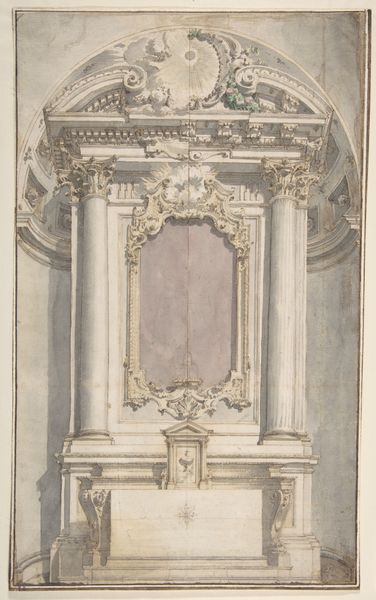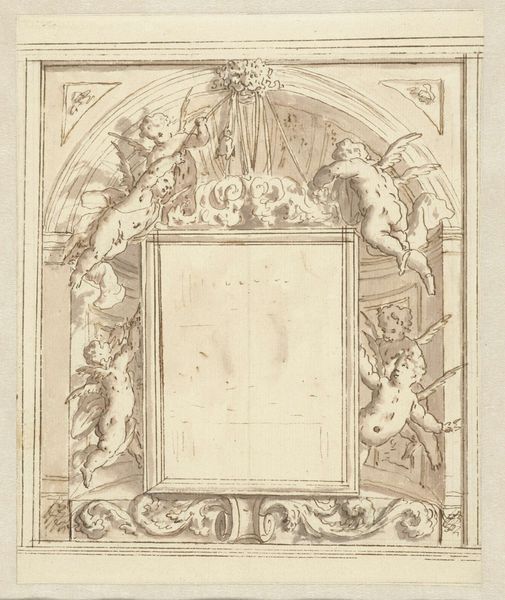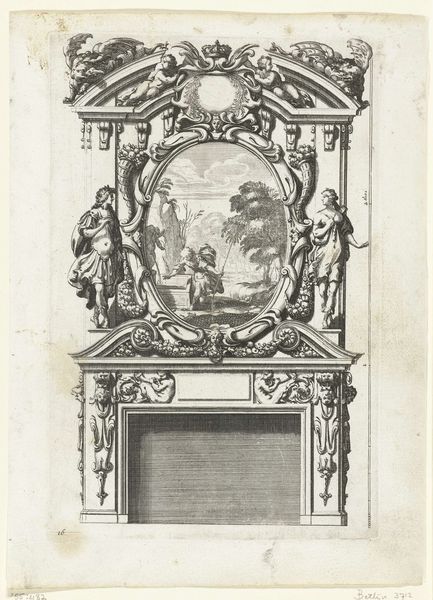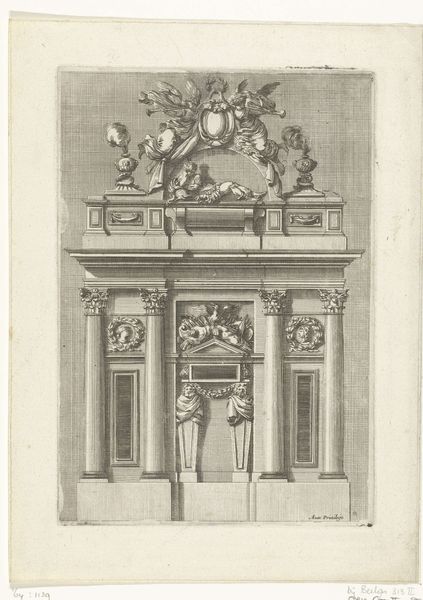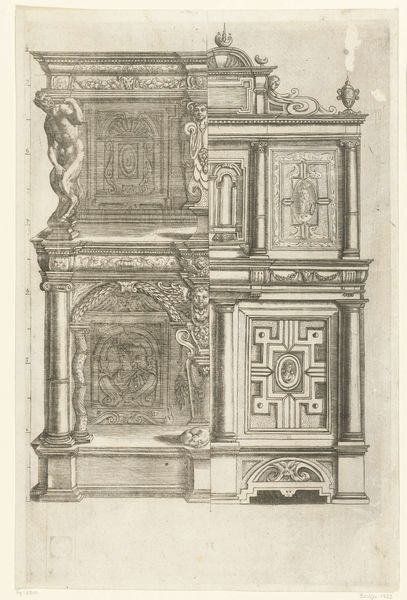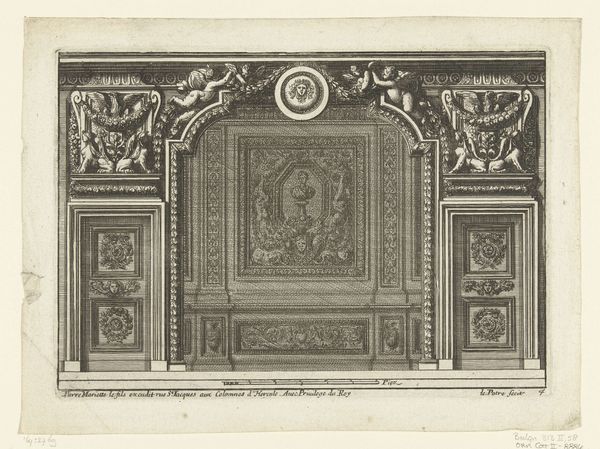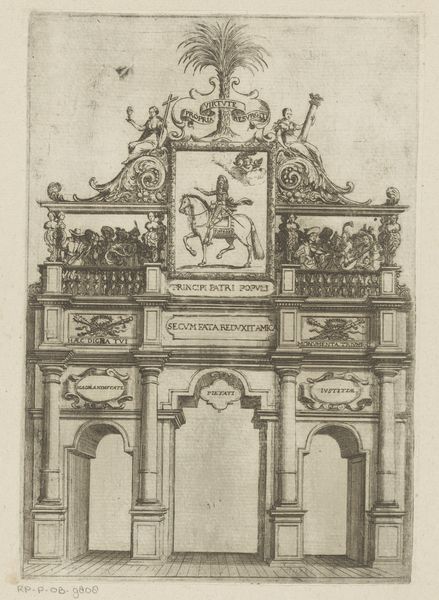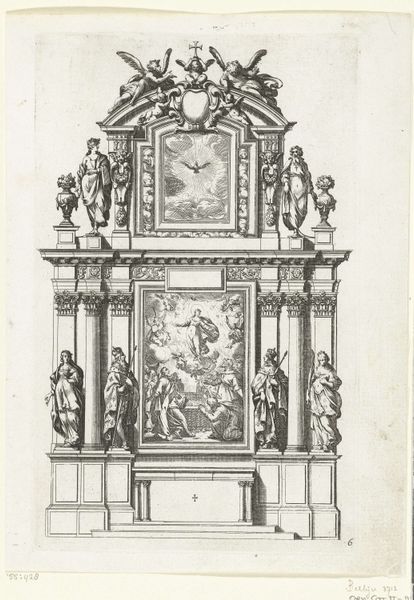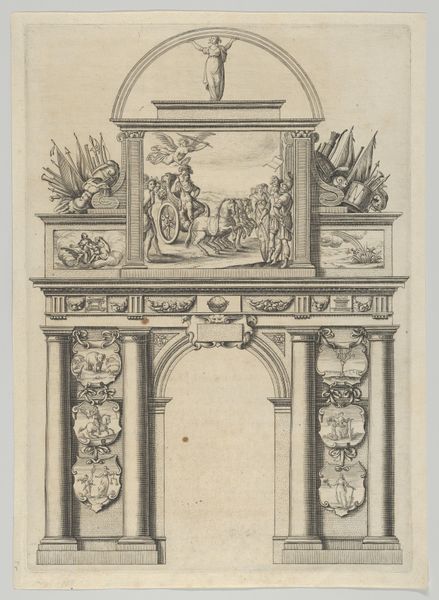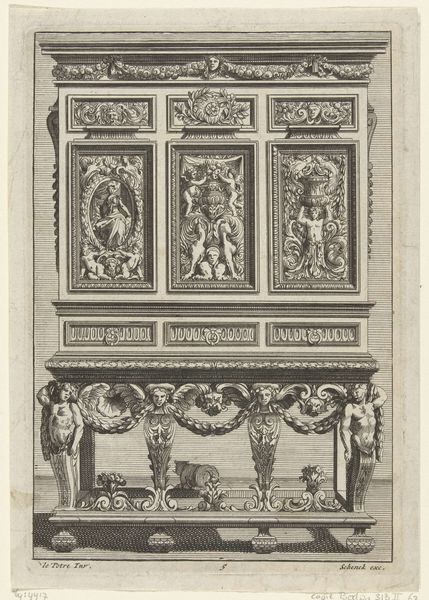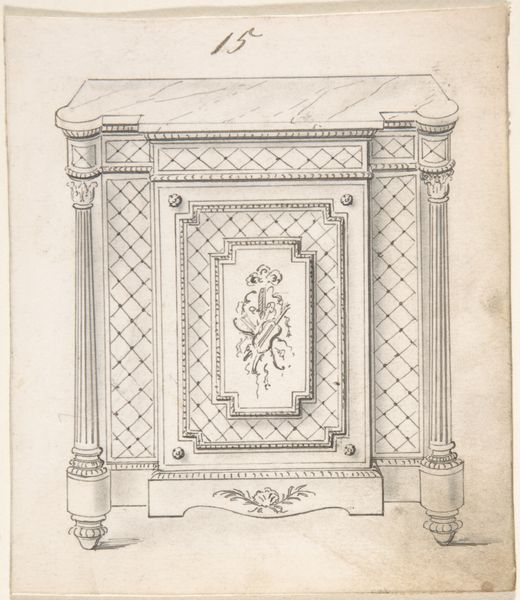
Design for a Tomb, with Ducal Crown at the Center 1700 - 1800
0:00
0:00
drawing, print
#
drawing
#
allegory
#
baroque
# print
#
perspective
#
history-painting
#
watercolor
Dimensions: 11-3/4 x 9 in
Copyright: Public Domain
Curator: This drawing, "Design for a Tomb, with Ducal Crown at the Center," created sometime in the 18th century, presents us with a fascinating intersection of artistic styles and cultural meanings. It currently resides here at the Metropolitan Museum of Art. Editor: My first impression is it feels like a stage set. You know, waiting for the play to begin. There's this odd tension between the delicacy of the lines and the heaviness of the subject matter. It gives off a slightly mournful air, what do you think? Curator: It certainly is striking. The architectural framework and the angelic figures are heavily baroque in their sensibility. Considering the socio-political function of tombs—memorializing the elite and reinforcing power structures—the baroque style adds a layer of theatricality to this funerary structure. Editor: It's also a rather interesting display of symbolic communication; from the cherubic figures holding what appears to be a Ducal Crown, to the cross positioned at its highest peak. You get a sense that it’s all part of a script that the upper class is reciting about its divine right to rule. Curator: Precisely. These motifs aren't merely decorative, they actively create and maintain narratives about legacy, divinity, and authority. Consider the use of classical architecture mixed with Christian symbology - this deliberate artistic language allows those in positions of power to inscribe themselves into history and divine providence. Editor: I wonder, though, about its location here in New York City. Did the patrons or audience during its creation realize the global trajectory their local art would take? Did they think that people hundreds of years in the future, so far removed from their power dynamics, would come to look at this work with so much…analysis? Curator: I imagine that these sorts of artworks—prints, in particular—have historically served as vectors for ideology and artistic innovation. Its relocation to New York complicates those prior intended meanings, allowing for more nuanced understandings of its original context as well as prompting discussions regarding present-day relations to legacy, power and mortality. Editor: Well, I have to say, I see this not as a symbol of past-tense history, but rather as a contemporary reminder of what we can choose to do with our time on earth—hopefully that choice is much better than this tomb is letting on. Curator: Agreed; let’s use such reflections to drive more inclusive, life-affirming narratives moving forward.
Comments
No comments
Be the first to comment and join the conversation on the ultimate creative platform.
